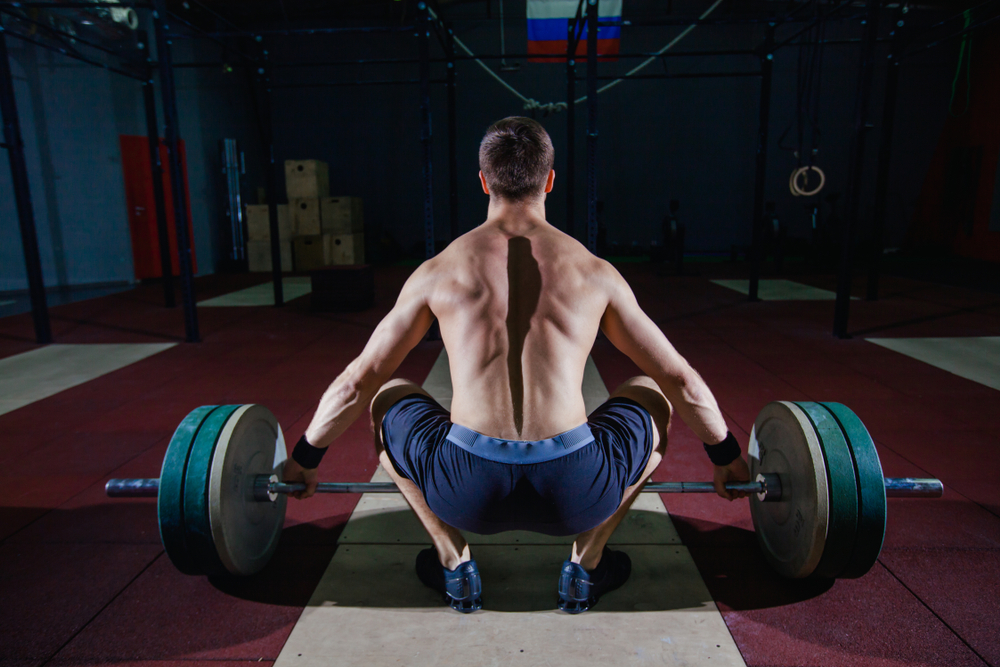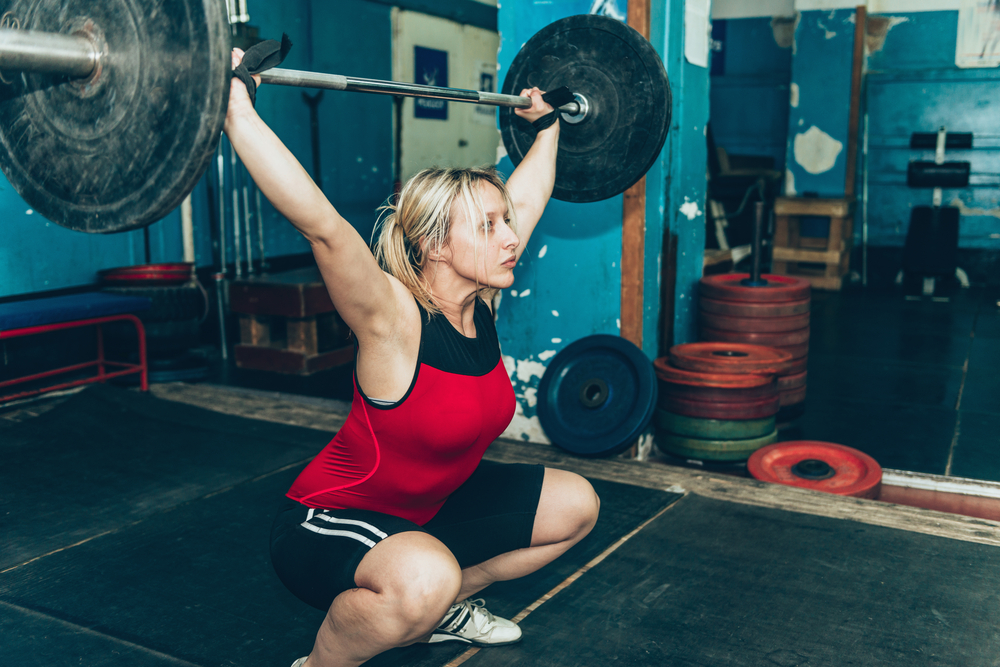We have known for quite some time that the Olympic lifts are fantastic exercises for developing power. Athletes from all walks of life practice power cleans, clean & jerks, and snatches on a regular basis in the hopes of developing more power on the court, field, and platform. So there’s really no denying the positive impacts these lifts have on athletic development, but what are there long-term effects on muscle fibers?
In a new study published on PLOS ONE, researchers assessed the muscle fiber composition of 21 weightlifters who were divided into three groups: World/Olympic Class Females (6), National Class Females (9), and National Class Males (6).
The best part of this study is that researchers assessed weightlifters who had previously competed at the 2017 IWF World Championships or the 2017 USAW American Open Finals, so these athletes are all currently at the top of their game. So what did they find? The results are pretty astounding.
Weightlifters and Muscle Fiber Composition
Participants and Assessment
Researchers assessed the 21 weightlifters’ muscle fibers with two different techniques, which included a single fiber assessment and a homogenate composition. Why two different testing methods? Single fiber testing highlights which muscle fibers express multiple slow, fast, and ultra-fast properties (in layman’s terms, it’s more accurate), while homogenate composition testing brings muscle fiber composition fractions to a similar state for an overall assessment.

To highlight how prestigious this group of 21 weightlifters was authors note in the study, “Athlete accolades at the time of data collection included participation in 3 Olympic Games, 19 World Championships, 11 Pan American Championships, 49 National Championships, 32 American Opens, 8 University National Championships, and 25 Junior World/Pan American/National Championships. Participants also held 25 national records and >170 national/international medals either at the time of the study or in the past.”
Needless to say, these 21 athletes are at the top of the weightlifting game. After competing at the 2017 IWF World Championships and/or USAW American Open Finals, participants had muscle biopsies taken from their vastus lateralis.
The Results
Get ready, because this is where things get interesting. Until now, there had never been a study performed on this large of a group of elite weightlifters assessing their muscle fibers — and the findings are insane.
Single Fiber Composition
Before diving into the single fiber findings, it’s important to remember that muscle fibers have the ability to express different traits of multiple fiber types (slow – Type I, fast – Type IIa, and Type IIx – ultra-fast), and are deemed hybrid muscle fibers. Consistently trained muscle fibers have been suggested to shift over time to accommodate for a frequent stimuli, thus creating hybrid muscle fibers.
From their assessments, researchers noted that single fiber composition between the three groups were all pretty similar. In the research they note, “FT% for all lifters combined was 23 ± 9% I, 5 ± 3% I/IIa, 67 ± 13% IIa, and 6 ± 10% IIa/IIx.”

The authors noted the World/Olympic Class Female group possessed slightly less Type I fibers compared to the National level athletes, but the difference was insignificant. In addition, authors noted that five athletes possessed Type IIa/IIx fibers and they were all found in heavyweight and superheavy weight athletes.
Homogenate Fiber Composition
The homogenate testing is potentially the most fascinating part of this study because it highlights how much fast twitch fiber percentages these weightlifters possess as whole. Homogenate testing classifies muscle fibers into three groups commonly known as Type I, Type IIa, and Type IIx.
In regards to the homogenate fiber testing authors note, “FT composition for all lifters combined was 31 ± 9% I, 67 ± 9% IIa, and 3 ± 6% IIx.”
Similar to the single fiber testing, the World/Olympic class Females possessed less percentages of Type I fibers compared to the National Class Females and Males. Researchers also noted that World/Olympic Classic Females possessed higher percentages of Type IIa fibers compared to National Class Males, but not females.
Discussion, Suggestions, and Takeaways
In the discussion portion of the study, researchers bring a lot of interesting points to light. They point out that this is the first study to compare World/Olympic athletes with National levels athletes on single muscle fiber basis, and it’s the most detailed of its kind.
On top of that, authors note that the World/Olympic Class Females displayed the highest cummulative percentage of Type IIa fibers (71%) that has been documented in research compared to other sports (to their knowledge). The National Class Females and Males possessed Type IIa fiber percentages of 67% and 63%, respectively. Authors suggest that these findings are related to the anaerobic training style weightlifters partake in on a regular basis.
To add to these findings, this study was extremely unique because it challenged a few notions that are tossed around in different strength training circles. For example, these findings challenge the idea that female athletes always possess more slow twitch muscle fibers compared to fast twitch. In this study, the female groups possessed higher amounts of fast twitch muscle fibers than the male athletes and what was previously found in other research.
Also, it’s worth pointing out that the Type IIa/IIx were found primarily in the heavyweight and superheavy weight athletes again. Typically, Type IIa/IIx fibers are related to poor muscle health (often present in muscle fibers that have lacked innervation for long durations of time), but these findings bring up an interesting topic that body mass may have something to do with a higher expression of Type IIa/IIx fibers.
If you have the time, then I highly recommend reading over the full study and discussion it’s truly the first of its kind!
Feature image from Microgen/Shutterstock.